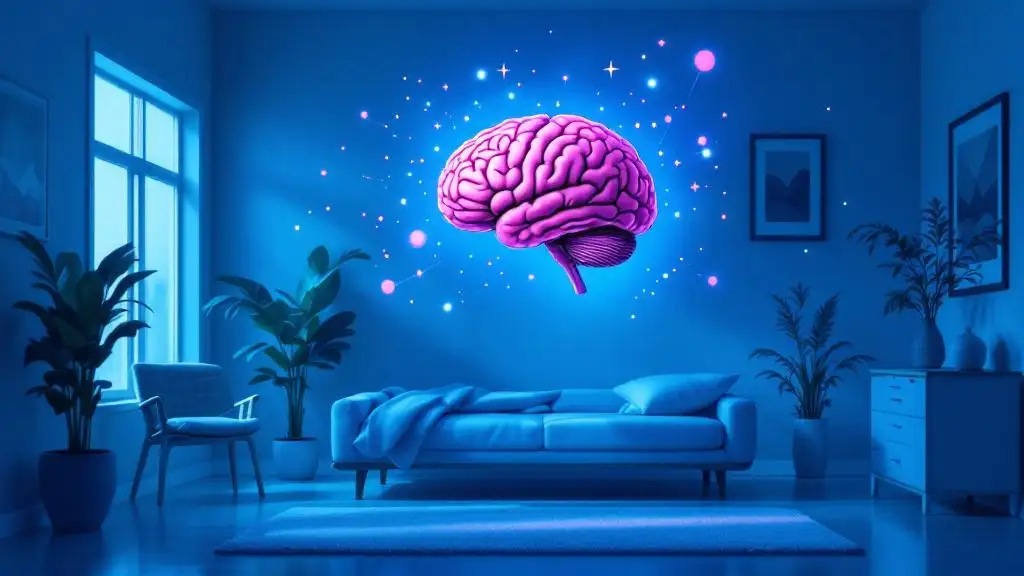Exploring the Link Between Autism and Depression
Unraveling the Complex Relationship Between Autism and Depression

Understanding the Interconnection Between Neurodevelopmental and Mood Disorders
The coexistence of autism spectrum disorder (ASD) and depression has garnered increasing attention among clinicians and researchers. This comprehensive exploration delves into how these conditions overlap, the factors contributing to their comorbidity, symptom manifestation, diagnostic challenges, and potential treatment strategies. By understanding the intricate linkages, we can pave the way for better assessment, intervention, and support for affected individuals.
Shared Symptoms and Overlapping Features of Autism and Depression
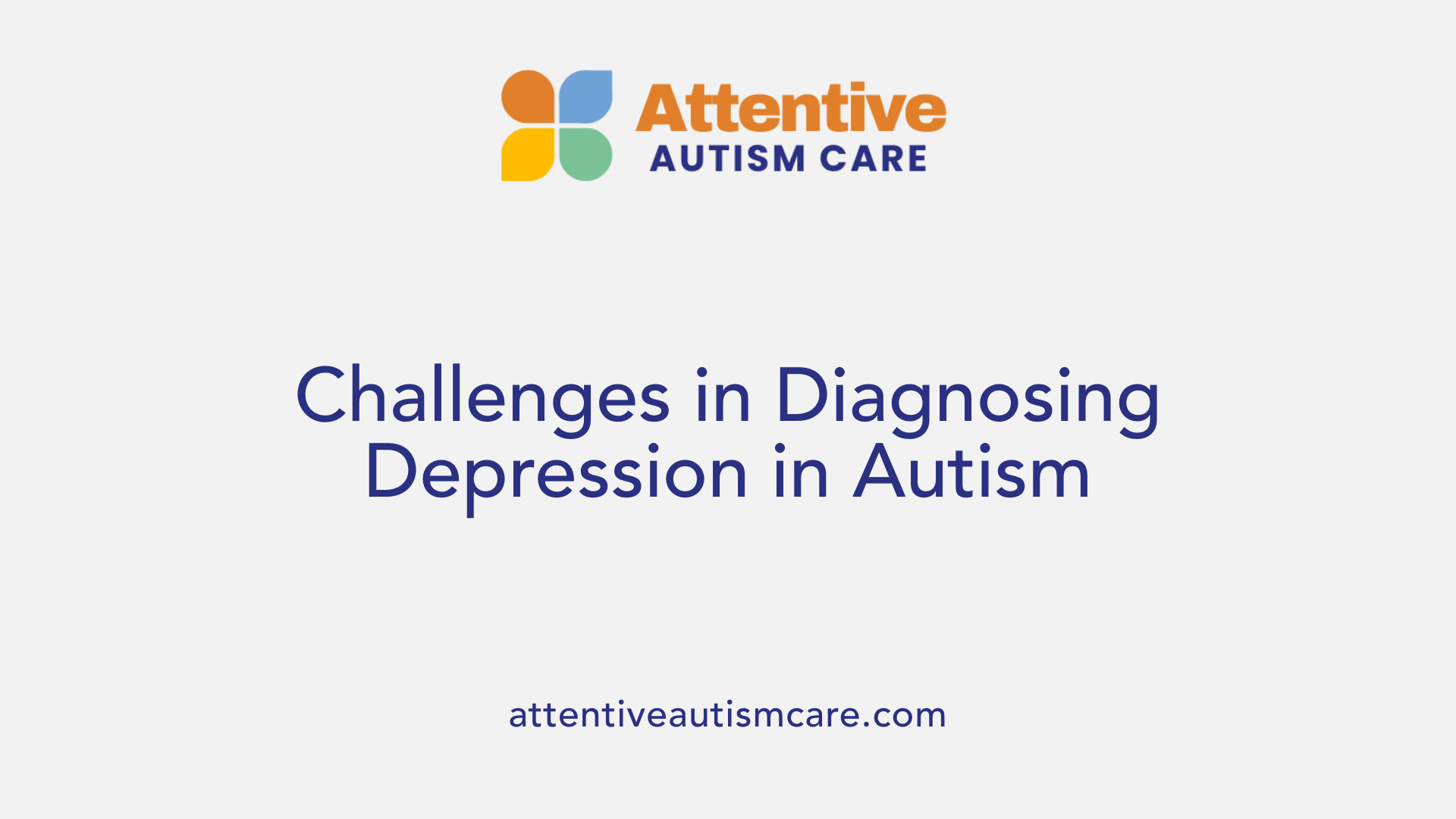
What are the common symptoms and overlapping features of autism and depression?
Autism spectrum disorder (ASD) and depression frequently present with similar symptoms, which can make accurate diagnosis challenging. Both conditions often involve social withdrawal and avoidance, which may stem from difficulties in social communication in autism or feelings of hopelessness in depression.
Sleep disturbances and changes in appetite are common in both disorders, with autistic individuals reporting insomnia and restlessness, and depressed individuals experiencing significant shifts in sleep patterns and eating habits. Reduced interest in activities, including engagement in favorite hobbies or social interactions, is another overlapping symptom. This loss of interest can be a hallmark of depression but may also be seen in autistic individuals, particularly during depressive episodes.
Difficulties with emotional expression further complicate diagnosis. Many autistic individuals struggle to recognize, understand, or verbally express their feelings, partly due to alexithymia (difficulty identifying emotions). Consequently, outward signs of depression, such as sadness or crying, might be absent or masked. Instead, behaviors like irritability, aggressive outbursts, or increased repetitive behaviors may indicate underlying depressive states.
Increased worry and a perceived lack of control over life circumstances are notable intrapersonal factors linked to both autism and depression. Worry has been associated with heightened depression risk, while feelings of mastery or perceived control are often diminished in both groups. Research indicates that autistic and depressed individuals report higher levels of worry and passivity, which can lead to a cycle of negative thoughts and behaviors.
Autistic individuals may also experience atypical presentations of depression. Instead of classic sadness, symptoms might manifest as heightened irritability, agitation, or physical complaints like fatigue. These symptoms are sometimes less recognized because they deviate from typical depression indicators.
Further, some features specific to autism, such as stereotyping, repetitive cognition (such as obsessive negative thinking), and sensory overload, can intensify during depressive episodes. These behaviors may be misinterpreted as solely autistic traits, masking the presence of concurrent depression.
Overall, the overlap of symptoms means that careful, nuanced assessments are essential. Recognizing the unique ways depression manifests in autistic individuals—including behavioral changes, physical complaints, and internal experiences—is vital for timely and appropriate intervention.
| Symptom or Feature | Common in Autism and Depression | Specific Manifestations in Autistic Individuals | Additional Notes |
|---|---|---|---|
| Social withdrawal | Yes | Avoidance of social situations, reluctance to communicate | Often related to social fatigue or sensory sensitivities |
| Sleep disturbances | Yes | Insomnia, restlessness, unusual sleep patterns | Can also relate to sensory sensitivities |
| Changes in appetite | Yes | Increased or decreased eating, weight fluctuations | Often overlooked due to developmental factors |
| Reduced interest or activity | Yes | Loss of engagement in preferred activities | May be misinterpreted as stagnation or routine adherence |
| Emotional expression difficulties | Yes | Masked sadness, irritability, externalizing behaviors | Due to alexithymia or communication barriers |
| Worry and perceived lack of control | Yes | Obsessive or ruminative thinking, feelings of helplessness | Contributes to depression progression |
| Atypical presentations | Yes | Hyperfixation shifts, increased self-stimulation | Differ from typical depression symptoms |
How do these overlapping features impact diagnosis and treatment?
Because of the shared symptoms, diagnosing depression in autistic individuals requires careful consideration. Standard assessment tools may not fully capture the atypical presentations, such as physical complaints or behavioral markers. Clinicians need specialized knowledge of autism-related behaviors and how depression might manifest differently.
Effective treatment strategies should be tailored to address these overlapping symptoms. Interventions like modified cognitive-behavioral therapy (CBT) can be adapted to account for communication preferences and sensory sensitivities. Additionally, monitoring for suicide risk, given the higher rates of suicidal ideation and attempts among autistic populations, is crucial.
In summary, understanding the common and unique features of autism and depression is essential for accurate diagnosis and effective care. Recognizing the complexity of their interplay supports better mental health outcomes for autistic individuals.
The Impact of Depression on Mental Health and Quality of Life in Autism
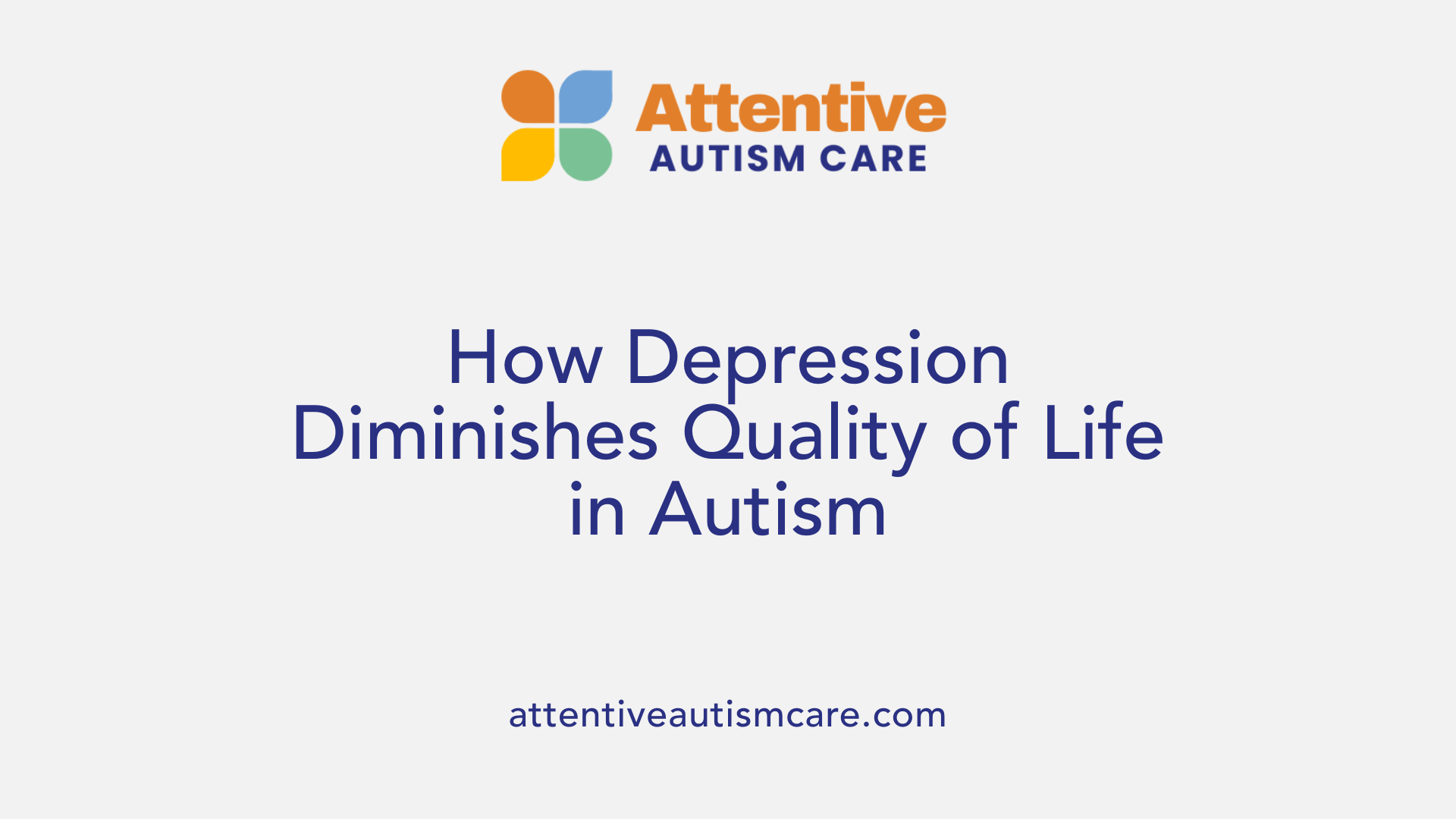
How does depression impact mental health and quality of life in individuals with autism?
Depression is a common and serious co-occurring condition in individuals with autism, affecting their mental health and overall quality of life significantly. Research shows that up to 40% of autistic adults experience depression at some point during their lifetime, with the prevalence increasing with age and intelligence levels.
This mental health challenge can deeply impair everyday functioning. It often results in heightened social withdrawal, decreased motivation, and a decline in the ability to engage in daily activities. Autistic individuals may also experience a worsening of core symptoms such as repetitive behaviors and sensory sensitivities.
Additionally, depression can lead to a lower quality of life through increased feelings of loneliness, hopelessness, and worthlessness. It also enhances the risk of suicidal ideation and attempts—studies indicate that children and adults with autism are significantly more prone to contemplate or attempt suicide compared to their neurotypical peers.
Effects on daily living, social skills, and independence
The impact of depression extends beyond emotional distress, affecting critical areas like independence and social skills. Depressive episodes can strip away interest in activities and interests that are usually rewarding, reducing participation in work or social relationships. This decline often results in greater reliance on others and increased difficulties in maintaining independence.
Socially, depression can cause or worsen feelings of social isolation, which in turn exacerbates low self-esteem and social withdrawal. These dynamics create a harmful cycle that further diminishes an individual’s ability to form and sustain relationships.
Increased risk of suicidal ideation and attempts
The heightened risk of suicidal thoughts and behaviors in autistic individuals underscores the urgent need for effective screening and targeted interventions. Factors like social rejection, discrimination, and difficulty communicating emotional distress contribute to this increased risk.
Studies reveal that autistic people often display significant signs of depression that might not be typical in neurotypical populations, such as increased repetitive behaviors, physical ailments, or agitation. Recognizing these atypical signs is crucial for timely intervention.
Manifestation of depression symptoms in autistic individuals
Symptoms of depression in autistic individuals can differ markedly from those in neurotypical populations. Instead of overt sadness, they may exhibit increased irritability, restlessness, or changes in routine behaviors. Sleep disturbances, such as insomnia, and physical complaints are common.
Other indicators include a noticeable loss of interest in engaging in special interests or routines, development of self-injurious behaviors, or heightened sensory sensitivities. External behaviors like aggression or agitation may also signal depression, but these signs can be misunderstood or overlooked.
Impacts on emotional regulation and social interaction
Depression further hampers emotional regulation in autistic people, leading to difficulties managing intense feelings or stress. It often worsens existing challenges with social interaction, making it harder to reach out or connect with others.
The combination of social withdrawal, increased anxiety, and negative self-perception creates a complex scenario where addressing depression requires careful, personalized approaches. Recognizing atypical presentations of depression and understanding its effects on emotional and social functioning are essential for providing effective support.
| Aspect | Description | Additional Notes |
|---|---|---|
| Prevalence | Up to 40.2% of autistic adults experience lifetime depression | Higher with increased age and intelligence |
| Symptoms | Sleep issues, irritability, repetitive behaviors, physical complaints | Can differ from typical depression signs |
| Risks | Increased suicidal ideation, social withdrawal, loneliness | Urgent for targeted prevention and therapy |
| Effects | Impaired daily functioning, decreased independence, social decline | Contributing to reduced quality of life |
Understanding these dimensions highlights the profound and multifaceted impact of depression on individuals with autism. It underscores the importance of early detection, tailored intervention, and ongoing support to improve their mental health outcomes.
Factors Contributing to Depression in Autism
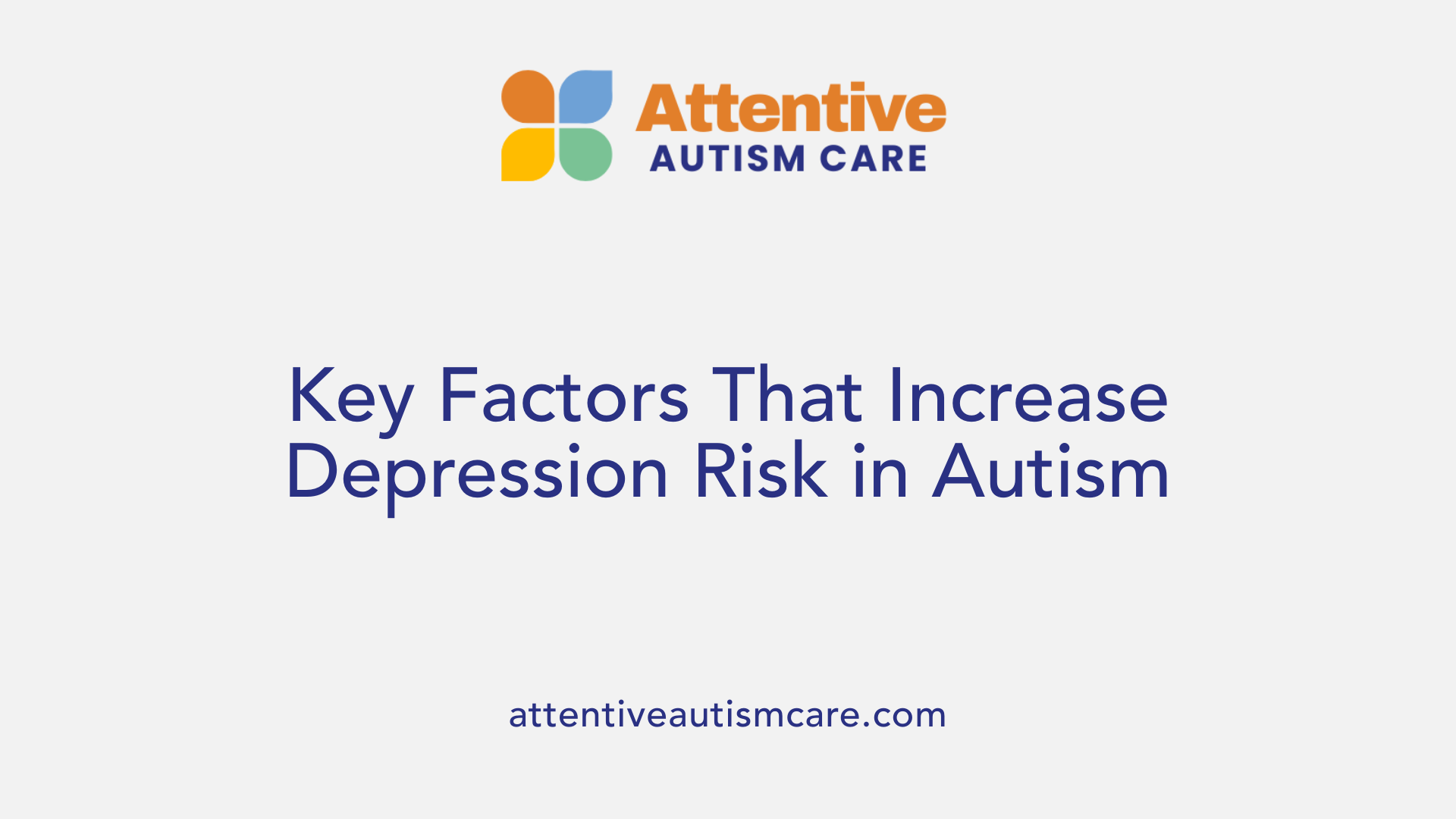
What factors contribute to the development of depression in individuals with autism?
The development of depression in autistic individuals is complex and influenced by a variety of interconnected factors. Understanding these influences can help in designing effective support strategies and interventions.
One significant contributor is social isolation and loneliness. Many autistic individuals find it challenging to establish or maintain social connections, often due to difficulties in social communication or social motivation. This sense of disconnection can lead to feelings of loneliness, which is strongly linked with depression.
Communication and social difficulties are hallmark traits of autism. Challenges in recognizing social cues, understanding others’ perspectives, and engaging in reciprocal social interactions can result in social withdrawal. When individuals struggle to connect, they may feel misunderstood or rejected, increasing the risk for depressive symptoms.
Sensory sensitivities and emotion dysregulation are also influential. Many autistic people experience heightened sensitivities to stimuli like bright lights, loud noises, or tactile sensations. These sensitivities can cause discomfort or overwhelm, leading to increased stress and difficulty managing emotions. The inability to regulate emotions effectively can foster feelings of frustration and hopelessness.
Furthermore, intolerance of uncertainty—a common trait among autistic individuals—can heighten stress levels. Unpredictability in daily routines or environments may lead to anxiety and sustained stress responses, which can evolve into depression if chronic.
Co-occurring health issues and learning disabilities play a crucial role. Conditions such as anxiety disorders, ADHD, epilepsy, and other physical health problems are prevalent within this population. These co-conditions can compound feelings of helplessness and exacerbate existing mood issues, creating a cycle that reinforces depressive symptoms.
Experiences of discrimination, bullying, and societal stigma are external factors significantly impacting mental health. Many autistic individuals face social rejection and prejudice, which diminish self-esteem and foster feelings of worthlessness. Repeated exposure to such negative societal attitudes sustains feelings of hopelessness.
On the flip side, protective factors like social support, community engagement, and inclusive environments can buffer against depression. Support from family, friends, and peer groups provides emotional safety and fosters resilience. Participation in community activities and access to adapted social opportunities can foster a sense of belonging and purpose, reducing the risk of depression.
| Factor | Impact | Additional Notes |
|---|---|---|
| Social isolation and loneliness | Major contributor to depression | Especially in those with limited social skills |
| Communication difficulties | Lead to social withdrawal | Can create misunderstanding and rejection |
| Sensory sensitivities | Increase stress and emotional dysregulation | Contribute to overwhelming feelings |
| Emotion dysregulation | Heightens emotional distress | Challenges in managing negative emotions |
| Uncertainty intolerance | Elevates anxiety and stress | Persistent unpredictability can be draining |
| Co-occurring health issues | Compound psychological burden | Includes physical illnesses and other disabilities |
| Discrimination and stigma | Diminish self-esteem | Reinforce feelings of hopelessness |
| Protective factors | Reduce depression risk | Support systems, community inclusion |
These factors often do not act in isolation but interact dynamically, influencing the mental health trajectory of autistic individuals. Such understanding underpins the necessity for tailored interventions that address both internal experiences and external societal factors.
Recognizing Depression in Autism: Challenges and Considerations
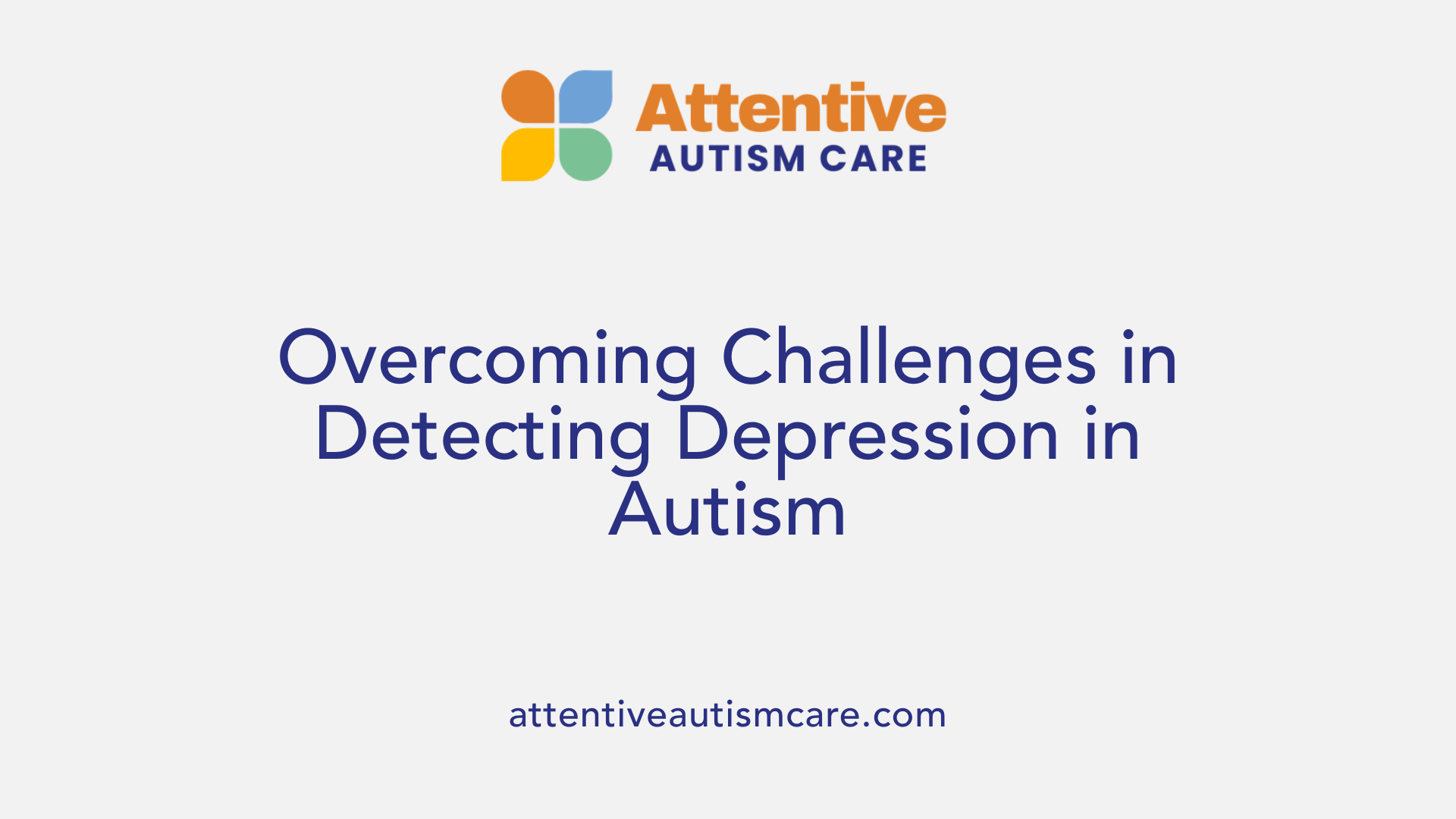
What are the challenges in diagnosing depression in individuals with autism?
Diagnosing depression in individuals with autism presents several unique challenges that complicate accurate detection and effective treatment. These difficulties primarily stem from overlapping symptoms and communication limitations, which can mask or mimic depressive episodes.
One significant issue is the similarity in symptoms shared between autism and depression. For example, both conditions may involve social withdrawal, irritability, and changes in sleep or appetite. When these signs occur, it becomes difficult to discern whether they are part of autism’s baseline behavior or indicative of a depressive episode.
Communication difficulties further complicate diagnosis. Many autistic individuals, especially those who are non-verbal or minimally verbal, may struggle to express their internal emotional states. This can lead clinicians to miss signs of depression or misinterpret behavioral changes.
Depressive symptoms might also manifest atypically in autism. Instead of typical sadness or crying, individuals may show increased repetitive behaviors, decreased interest in preferred activities, or subtle behavioral shifts that are harder to interpret. These variations require a nuanced understanding of each person’s typical behavior, which is often lacking without detailed baseline data.
The absence of standardized diagnostic tools tailored specifically for autism adds another layer of complication. Most traditional depression screening instruments are designed for neurotypical populations and may not account for autism-specific presentations.
Given these challenges, accurate diagnosis relies heavily on a comprehensive, multi-method approach. Clinicians often integrate observations from multiple informants—such as caregivers, educators, and healthcare providers—and use adapted assessment strategies. These may include behavioral interviews, observation checklists, and tailored questionnaires that consider the individual's developmental level.
In summary, recognizing depression in autism requires awareness of atypical presentations, patience in gathering information from various sources, and the adaptation of assessment methods to improve detection. Early and accurate identification is crucial, as untreated depression can significantly impair quality of life, exacerbate behavioral challenges, and increase suicide risk in autistic individuals.
Manifestation of Depression in Individuals with Autism
How does depression manifest in individuals with autism?
Depression in individuals with autism often presents with a combination of traditional symptoms found in the general population and autism-specific behaviors. While common signs such as persistent sadness, feelings of hopelessness, irritability, and a noticeable loss of interest in hobbies or daily activities are still observed, the expression of these symptoms can differ.
In autistic individuals, depression may be masked by or overlap with core autism traits like social withdrawal, flat or dulled affect, and limited expressive communication. For example, instead of verbalizing feelings of sadness, an autistic person might exhibit increased repetitive behaviors, agitation, or physical complaints without apparent medical cause. Furthermore, changes in sleep patterns and appetite are frequent symptoms, yet these can also be attributed to autism or other co-occurring conditions, complicating accurate diagnosis.
Research shows that depression may also manifest through subtle behavioral cues, such as increased self-stimulatory actions, heightened ritualistic behaviors, or a decrease in interest or participation in preferred interests. These traits, when observed alongside other signs, can indicate an underlying depressive episode.
A significant concern is the higher likelihood of suicidal ideation and self-harming behaviors among autistic adults compared to neurotypical peers. The compelling link between depression and increased risk of self-injury highlights the critical need for vigilant assessment and intervention.
Because traditional depression assessment tools may not fully capture the autistic presentation, healthcare providers are encouraged to consider autism-specific signs during evaluation. Tailored screening measures and clinical judgment are vital for identifying depression accurately in this population.
Recognizing the multifaceted expression of depression in autism leads to better support, targeted treatments, and improved mental health outcomes. Given these complexities, it is essential to adopt a nuanced approach that considers each individual’s unique communication style, behavior patterns, and emotional expression.
Treatment Strategies for Autism and Comorbid Depression
What treatment options are available for individuals with both autism and depression?
Treating depression in individuals with autism involves a multifaceted approach tailored to each person's unique needs and communication style. Evidence shows that a combination of psychotherapy, medication, and behavioral support can be effective.
One of the most adapted psychotherapy methods is cognitive-behavioral therapy (CBT). Modified CBT techniques focus on helping autistic individuals recognize and express feelings, manage stress, and reduce obsessive thoughts. These adaptations often include visual aids, structured sessions, and a focus on concrete skills, especially useful for those with mild to moderate autism. For those with more significant communication challenges, alternative therapeutic approaches like play therapy or sensory-based interventions may be incorporated.
Pharmacological treatments are also common, with antidepressants such as selective serotonin reuptake inhibitors (SSRIs) being prescribed to manage depressive symptoms. While SSRIs can help improve mood and reduce anxiety, they require careful dosing and monitoring due to higher sensitivity in autistic individuals and the risk of side effects like agitation, sleep disturbances, or increased irritability. In some cases, antipsychotic medications are used to address severe irritability or depression symptoms, always under close medical supervision.
Behavioral and supportive interventions play a vital role. These include structured routines, social skills training, and strategies to enhance self-efficacy and reduce feelings of loneliness. Behavioral therapies aim to improve daily functioning and emotional regulation, thereby decreasing depression risk.
Peer and community support are equally crucial. Support groups, social clubs, and mentorship programs help reduce social isolation, promote positive social interactions, and provide a sense of belonging. Such programs can foster resilience, boost confidence, and offer coping strategies that complement clinical treatments.
Emerging research points toward innovative therapies and new avenues like mindfulness-based practices, arts therapy, and virtual reality interventions. These methods aim to reduce anxiety, enhance emotional awareness, and improve social engagement.
Overall, the treatment landscape for autism co-occurring with depression continues to evolve. Combining evidence-based therapies with ongoing assessment and a personalized approach ensures that interventions address both the emotional and behavioral aspects of each individual’s condition.
| Treatment Modality | Typical Content/Approach | Considerations |
|---|---|---|
| Modified CBT | Visual supports, structured sessions, focus on feelings | Suitable for mild to moderate autism, requires trained therapists |
| Medication (SSRIs/Antipsychotics) | Mood stabilization, symptom reduction | Needs close monitoring, individualized dosing |
| Behavioral Support | Routine establishment, social skills training, activity planning | Enhances daily functioning, reduces social isolation |
| Peer and Community Support | Support groups, social clubs, mentorship programs | Promotes social connectedness and resilience |
| Innovative Therapies | Mindfulness, arts therapy, virtual reality | Promising but requiring further research |
Research continues to improve understanding and effectiveness, emphasizing the importance of tailored interventions for each person with autism and depression.
The Future of Research and Clinical Practice
What is the relationship between autism and depression?
Autism and depression are closely linked, with studies showing that up to 40.2% of autistic adults have experienced depression at some point in their lives. Autistic individuals are almost four times more likely to develop depression than those without autism, making this a significant mental health concern.
This high co-occurrence suggests shared underlying factors. Autistic people often report worries and feelings of a lack of control—elements that are strongly associated with depression. For example, research using network analysis indicates that perceived mastery or control acts as a central connection point between autism traits and depressive symptoms.
Many autistic individuals also experience feelings that differ from typical presentations of depression. Instead of sadness, they may show symptoms like insomnia, restlessness, or obsessive behaviors. Discrimination, social stigma, social difficulties, and sensory sensitivities further increase their vulnerability, contributing to feelings of loneliness, rejection, or social exclusion.
Traits commonly found in autism—such as repetitive behaviors, alexithymia (difficulty recognizing and describing emotions), and sensory overload—can interfere with emotional processing. This can complicate diagnosis because standard depression symptoms like sadness may be less evident or expressed differently.
Further, social challenges, including difficulties with social communication and interaction, are linked to higher depression risk. The social environment’s role is crucial, as bullying, social rejection, and inability to connect may exacerbate feelings of isolation.
Overall, understanding this relationship underscores the importance of developing tailored approaches that consider the unique psychological and environmental experiences of autistic individuals. Addressing both the shared traits and environmental factors is critical for effective intervention and support.
Holistic Approaches and Moving Forward
The intricate relationship between autism and depression necessitates a comprehensive approach encompassing improved diagnostic tools, personalized treatment strategies, and ongoing research. Recognizing the unique ways depression manifests in autistic individuals, overcoming diagnostic hurdles, and addressing shared psychological factors like worry and perceived control can lead to more effective interventions. Future research must prioritize understanding causality, developing tailored medications, and integrating psychosocial support to enhance outcomes. By fostering an inclusive understanding and advancing clinical practices, we can better support autistic individuals in managing depression, ultimately improving their mental health, independence, and quality of life.
References
- Autism and depression are connected: A report of two ...
- Autism and Depression: What's the Relationship? - Healthline
- Exploring the association between social skills struggles and social ...
- Autism and depression: What is the connection?
- Exploring autistic traits in adults with chronic depression: A clinical ...
- The deep emotional ties between depression and autism
- Exploring the Link Between Autism and Depression | Strides ABA








































































